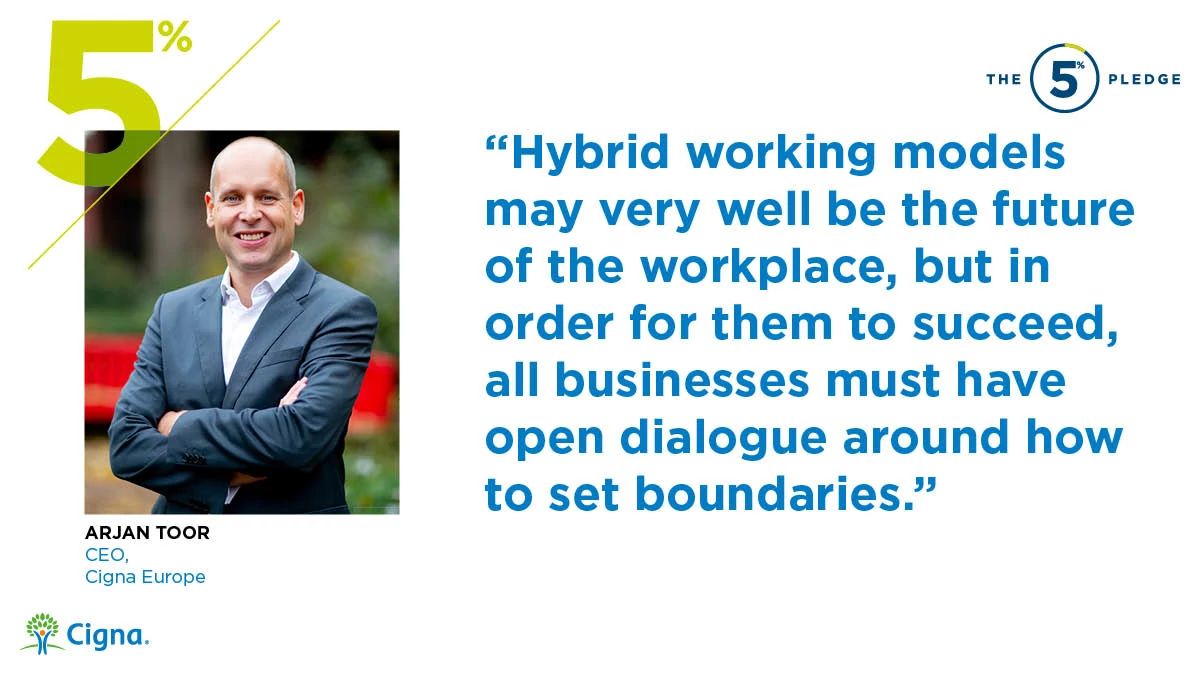What is hybrid working?
The working world has rarely seen so much change in such a short space of time as it has in recent years. Office-first environments, with all the routines and rituals that come with them, shifted to complete remote working where the kitchen table doubled as a hot desk, and now many are experiencing something that’s an in-between. Across the world, the hybrid model has slowly become the norm.
What it means to each company can vary, it can hand the power of choice over to employees completely, or it can have a defined number of compulsory office days mixed with days working from home, but essentially hybrid working is just a more flexible approach to how the working week is structured. And it’s certainly widespread, with 82% of employers keeping some remote work in their business model.
The benefits of hybrid working
Simply put, the removal of a commute has given us more time. More time with family, more time with friends, and more time for the individual. Former full-time office workers navigated the challenges of working from home – making the space work and avoiding distractions (or at least managing them) – and we can now create new opportunities to improve mental health and well-being within our organisations by embracing hybrid working. And it’s sorely needed, with 77% of employees reporting symptoms of burnout this year. Learn more on understanding burnout and how to prevent it.
Allowing employees control over their working life, the where, when and how, can hopefully empower them to make decisions that work best for them in terms of productivity and practicality, while also delivering the best results for employers when it comes to output. That better work-life balance should help to experience reduced stress levels and increased job satisfaction which can hopefully lead to improved performance and staff retention.
Defining workplace boundaries
So how do you make this work? It sounds simple, but it’s about boundaries. Boundaries are limits that define a person’s relationship to someone or, in the case of workplace boundaries, their job. Boundaries protect us by making clear what our responsibilities are, and what the responsibilities of those around us might be, it avoids shades of grey where uncertainty can breed. Setting real boundaries when in the workplace can help to preserve the physical and emotional energy of employees, helping them to stay focused and productive.
Some examples of typical workplace boundaries:
- No calls after hours
- Being able to say no, when already busy
- Limits on screentime
- Ensuring breaks are long enough

Hybrid workplace boundaries
The main challenge of the hybrid working model is ensuring employees are equipped with the knowledge to effectively separate their work from their personal lives. Transitioning from a traditional working structure to a hybrid one comes with shifting boundaries. New boundaries will be created, and others might disappear.
Preserving old boundaries and establishing new ones can be essential to professional fulfilment in the new world of hybrid working. Like most measures in place to safeguard employee well-being and mental health, boundaries centre around communication. If you know what your boundaries are, you can communicate them clearly to the people you work with. It is also the responsibility of managers and senior leadership teams to work with their employees on what their boundaries are and making sure they are respected. This could fall under the remit of your 5% Pledge hours.
Four Steps to setting boundaries in a hybrid workplace
- Define your own boundaries. Be clear about what you want, and don’t want, from your working life. Remember that boundaries are there to give you a sense of security and clarity in your day-to-day life. Your identity is key to working out what your boundaries are, as they will differ from person to person.
- Be aware of others’ boundaries. Recognising that boundaries depend on the individual will create empathy among employees and working teams. Team leaders have a responsibility to know the boundaries of each team member. Have an open dialogue that clarifies responsibilities with the group. Demonstrating an understanding of co-workers’ boundaries is one of the best ways to show respect, and build strong relationships.
- Be open to flexibility on your boundaries. Boundaries are created so that we understand our own needs and the needs of the people we work with. However, due to boundaries being different from person to person, and most working models requiring a degree of collaboration, all employees should be willing to suspend their boundaries occasionally.
- Have communal boundaries. There will be certain boundaries that should apply to everyone. These are there to make sure that everyone is treated equally within an organisation, as equality is very valuable to a functioning team. These communal boundaries should be established and communicated from the top of the organisation.
Key to everything when it comes to creating and setting workplace boundaries is trust. ‘Trusting relationships will motivate people to work together to solve hard problems and are the currency of all healthy work relationships, whether virtual or face-to-face,’ says Graeme Codrington, a Future of Work expert. ‘It’s a two-way street: you must be trustworthy and also demonstrate trust in your teammates.’ Learn more on how to build a culture of trust in the hybrid workplace.
Manage all of this, and everyone will benefit, with three quarters of employees feeling they are just as, or more, productive since going remote, or hybrid.
Being open about the situation is also essential, so keeping the dialogue going between senior leadership teams, and among employees, is vital.

